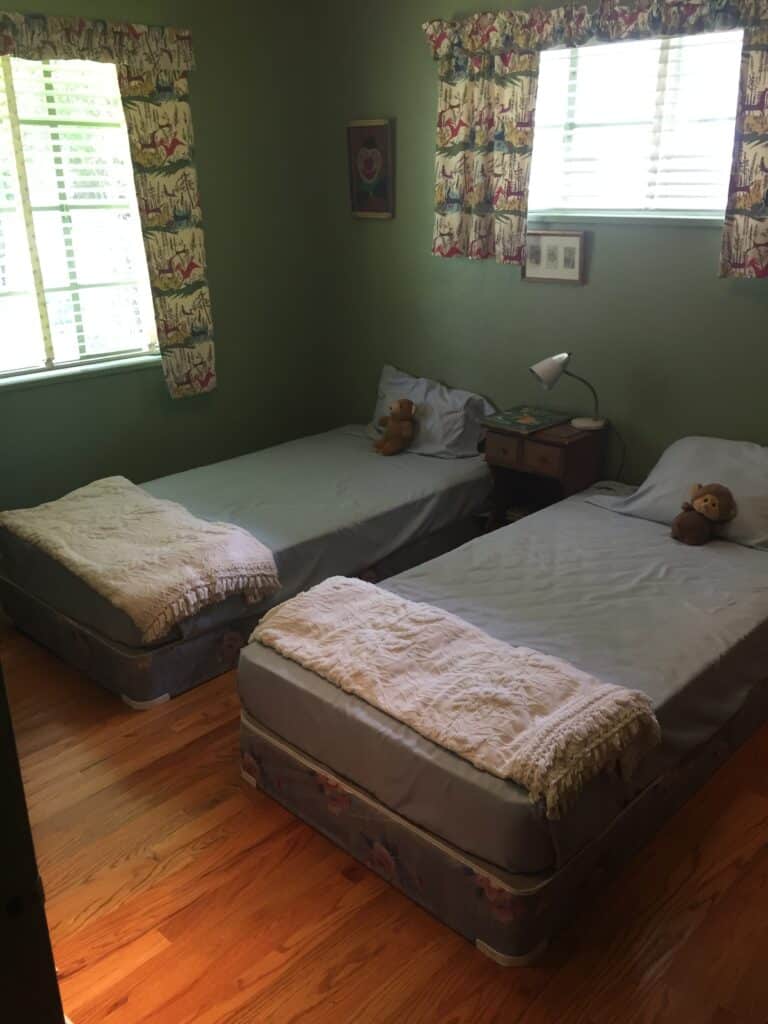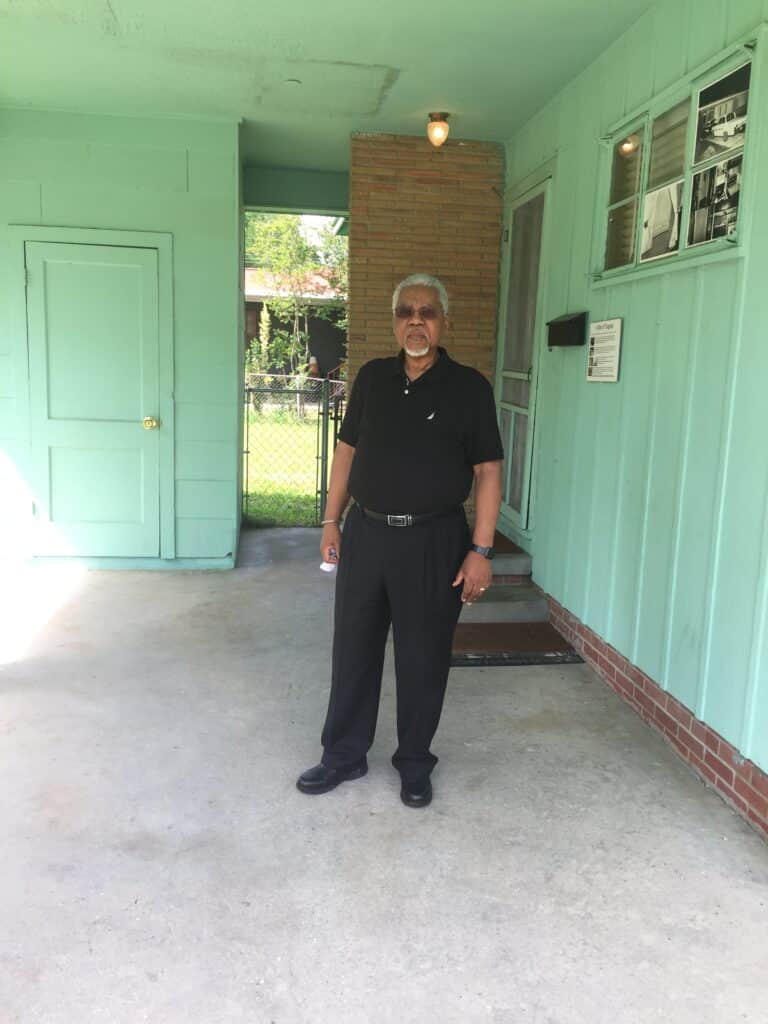Avocado Refrigerators
The past can scream at us in unusual and instructive ways. An avocado-colored refrigerator is a bygone token from the late fifties or early sixties, reflecting the sleek and modern amenities of the time. Now, we chuckle at the quaintness of these antiquities. This particular photo is of the Medgar Evers family kitchen at the home where he was shot in his driveway on June 11, 1963, by the bullet of Byron Da Le Beckwith. Evers, a prominent civil rights activist, died the next day.

The everyday items that surround us create our normal existence. As children, we accept their existence as part of our everyday lives. As children, we are taught what is normal. Childhood is the place where normal is established, locked into place by the assumption that everyone must feel the same or experience the same or understand the world the same way. It seems we work our entire adulthood to justify that definition of normal or struggle to amend that definition for ourselves.
Lee Odems, my friend and mentor, shared these photos with me after visiting Medgar Evers’ home in 2018 with his own two sons. Lee had once lived on the street behind the Evers home and played with the Evers children. As he shared these photos with me, he seemed to struggle with ideas on how far our country has and hasn’t come even as he recalled his own personal memories of the Evers family.
It’s always difficult to retrace steps and return to a place of significance in our childhood. What we assumed was true at that time seems to slap us in the face against the reality of what we know now. With his accumulated years, Lee reflected on how far he had come, a child of Jackson, Mississippi to a successful businessman in Virginia. He also appeared to contemplate what was normal then and what is normal now. What had fundamentally changed and what had not?
As Lee advanced through these photos with me, he explained what he remembered of playing with the Evers’ children beneath their carport, the place where Medgar was killed, the concrete still bearing stains of his blood. I gulped. Then he showed me the photo of the children’s bedroom, where the mattresses were placed directly on the floor. When I asked why they were placed so low, he explained it was needed at the time to avoid injury from flying bullets and rocks or an intentionally thrown Molotov cocktail. I took a breath. “Excuse me?”

Imagine the conversation between Medgar and his three children, James, Darrell and Reena, as he explained why the mattresses needed to be placed on the floor. Imagine trying to sleep despite that reality. Imagine this being normal.
When Lee shared these photos, I was shocked. He was not. As I remembered all of my childhood bedrooms, not one required that the mattress be placed on the floor to avoid violence penetrating my window. For Lee, there was nothing shocking about it, just a sad, well-worn reality. Mattresses on the floor had become as normal to the Evers family as the avocado refrigerator.
Eudora Welty wrote a fictionalized version of the Evers assassination from the perspective of the assassin titled “Where is the Voice Coming From?” which attempts to explain the hate required to take a man’s life based on the normalized understanding of race at the time. In explaining her motivation for writing the story, Welty tells William F. Buckley “What I was writing about really was that world of hate I felt I had grown up with and I felt I could speak as someone who knew it.” That hate was normal in Welty’s childhood, but she had worked her entire writing life to understand and redefine it.
Welty used her pen to help the reader feel the hate of the assassin’s bullet. “Great fiction,” Welty wrote, “shows us not how to conduct our behavior but how to feel. Eventually, it may show us how to face our feelings and face our actions and to have new inklings about what they mean.” (Source: The New Yorker, July 18, 2013, by Casey Cep)
Lee used his words and actions to uncover all of those normalized assumptions in my thinking, in my past, all of those avocado refrigerators that needed to be redefined, unwound or reconsidered. He pushed and cajoled and humored his way into my consciousness, asking me to be honest with myself. We shared many conversations and articles and quips, the kind that have kept me pondering the nature of our history and our humanity for years. Lee boldly walked back to his childhood to recall what must have been a painful memory for him in order to remember, question, and evaluate, always with an eye toward identifying how we can do better. He has emboldened me to do the same.
Thank you, Lee.




Wow, I love how you drive this reality home with that analogy and imagery. So true how “normals” are rooted in childhood and stay. Thank you for this insightful piece!
We take soooo much for granted!! Children are definitely wet cement that we all have the opportunity to help mold into caring human beings ❤️. Thanks
Yet another insightful writing. Thank you for being you and sharing.
Lee would be so proud of you.